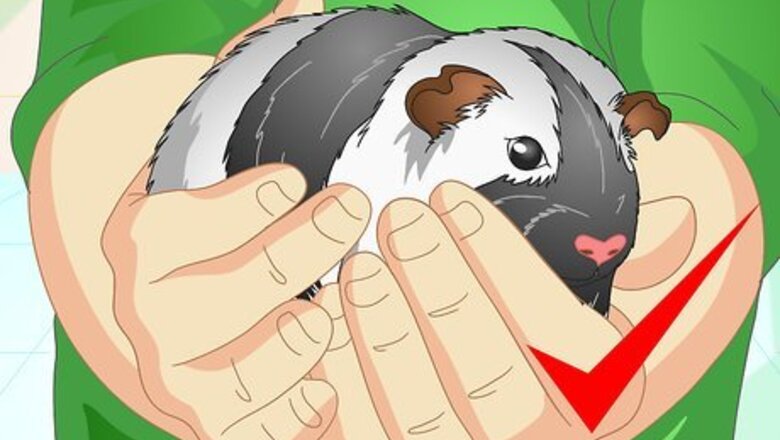
views
- Remove your guinea pig from their cage and place them somewhere safe and comfy, like a secondary cage or their favorite shelter.
- Scoop out and trash any soiled bedding, then use a damp paper towel to wipe away any waster or grime from the toys cage itself.
- Wash the water and food bowls with warm soapy water and rinse them thoroughly, then refill them with fresh food and water.
Making Your Guinea Pig Comfortable
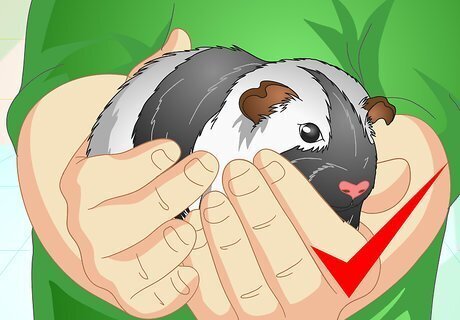
Restrain your guinea pig. Do this by gently placing one hand around its chest, keeping your thumb beneath the guinea pig's jaw. Use your other hand to support the guinea pig's hindquarters, holding it upright between your two hands. It's important to handle your guinea pig firmly enough that it won't fall, but not so firmly as to injure its body. Be aware that if your guinea pig is prone to nervousness or skittishness, it may try to squirm out of your hands and jump, which can lead to serious injury.
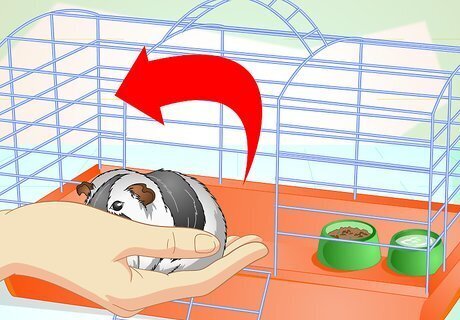
Take your guinea pig out of its cage. Once your guinea pig is properly restrained, move it into a safe, enclosed space from which it can't escape. Make sure somebody is around watching your guinea pig, and that there are no loud noises around that may scare it. Someone can hold your guinea pig if you want.
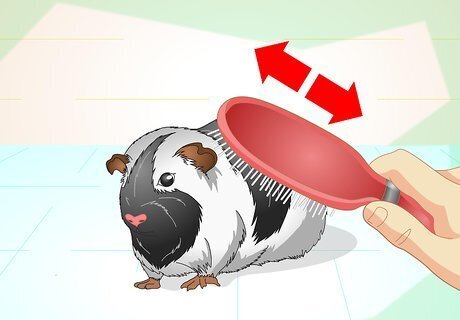
Groom your guinea pig, as necessary. Long-haired guinea pigs need to be brushed daily. If you need to groom or bathe your guinea pig, it may be easiest to do so while your pet is out of its cage. Unless your guinea pig has gotten sticky or smelly, it should only need to be bathed a maximum of 2-3 times per year.

Give your guinea pig someplace to hide. Your pet should be used to having a designated hiding place in its permanent cage. When you remove your guinea pig from its home, it may become frightened. If you can't fit its permanent hiding place into the temporary enclosed space, make a small temporary space by cutting the bottom out of a cardboard box.
Cleaning Your Guinea Pig's Cage on a Daily Basis
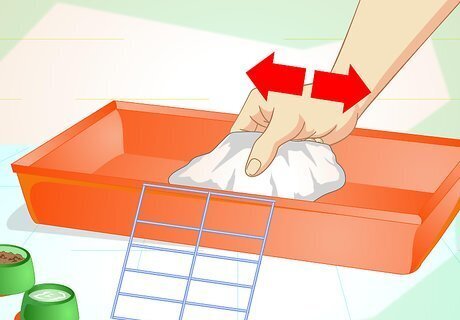
Spot-clean the cage. Remove excess food and waste and spot-clean the cage as needed with a wet paper towel. Scoop out any soiled bedding and replace it with dry, fresh bedding.
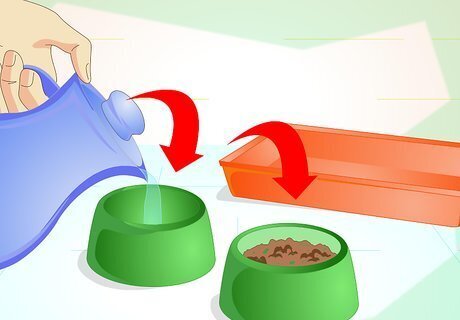
Refill food and water. This should be done every single day. If your guinea pig spills water into the food dish, remove that food and replenish the dish with fresh, dry food.

Wash food and water dishes in hot, soapy water. Doing this every day will help prevent bacteria from growing in the food and water receptacles.
Conducting Weekly Cleanings
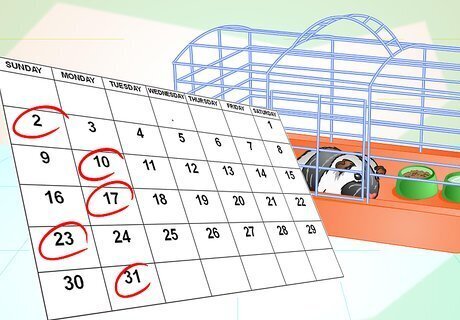
Plan to conduct thorough cage cleanings about once every week. Though daily maintenance and spot-cleaning are necessary, you will also need to thoroughly clean out your guinea pig's cage once every week. This will ensure that your guinea pig is healthy and happy, and its environment is odor-free.
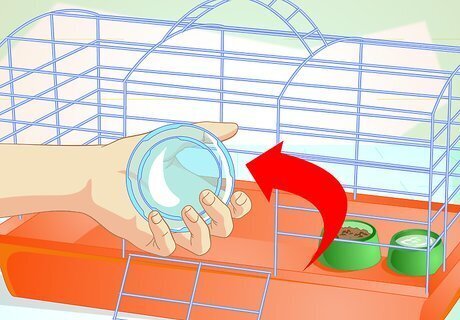
Remove everything from your guinea pig's cage. When you're doing a thorough cage cleaning, remove all of your pet's toys, as well as its food bowl, water bottle, and hiding place.

Wash the water bottle and food bowl. A guinea pig will often get pieces of bedding and/or droppings into its food bowl, so it's important to clean food and water bowls regularly. Empty any leftover food and water. Then run some hot water and submerge the water bottle and food bowl. Leave them in the sink to dry while you clean out the cage. If your pet's hiding place can be washed, it's a good idea to rinse it off as well.

Take your cage to where you plan to clean it and get a large garbage bag. Carefully brush everything into the bag, removing all substrate material from the enclosure. For really big cages, it is handy to have a cat-poop scooper to scrape out the cage. Do not use the same one as your cat, dog or other pet.
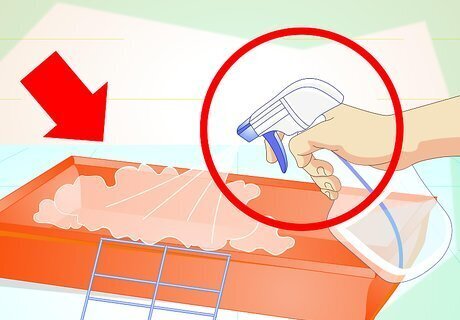
Spray the inside of the cage down. You can use a mild detergent, or mix three-parts warm water and one-part distilled white vinegar. You can also use 1 part bleach to 32 parts water (1/2 cup bleach to 1 gallon of water). For deeper stains and messes, use undiluted vinegar, but make sure to clean off well afterward! Allow the disinfectant to sit on the surface for 10 minutes so that it has time to work, killing bacteria and other harmful elements.

Rinse the cage out. After allowing the disinfectant to sit, thoroughly rinse off every surface of the cage with hot water. Make sure there is no residue from the disinfectant on any surface.
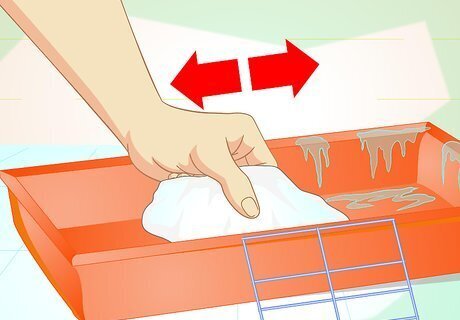
Dry the cage with paper towels. If you have the time, you can let it air dry. It's important to be sure your guinea pig's cage is completely dry before laying down the newspaper and bedding, as dampness can quickly cause a mold problem that can lead to illness for your pet.
Setting Up Your Pet's Home
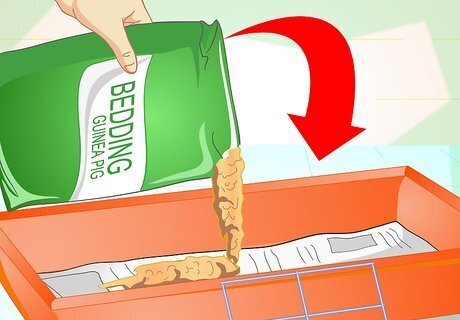
Line the cage with fresh and clean new newspaper, then fill with bedding. You should make the bedding about 1-3 inches deep, or 2.5-7.6 centimeters. You should never use cedar or pine shavings. Though these wood chips are often sold for use in cages, they actually contain chemicals which can be harmful to your guinea pig. Generally speaking, hay makes a good bedding choice. But damp hay can harbor fungal growth, and dry, dusty hay could cause respiratory problems.
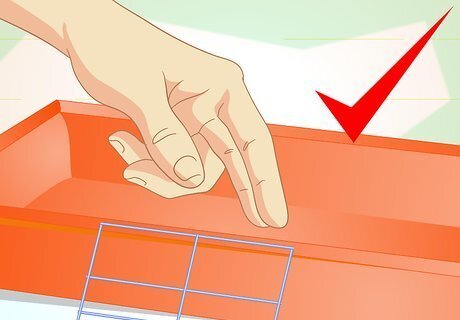
Be sure the cage is completely dry before you put down newspaper and bedding. Putting down new bedding and newspaper on a damp surface can quickly lead to mold and fungus growth in the cage.

Put the cage back together (if you took it apart) and put the toys and things back in their places. Hide your pet's favorite treats in paper towel rolls or hang them up by a piece of string. (But make sure your piggy can reach it!)
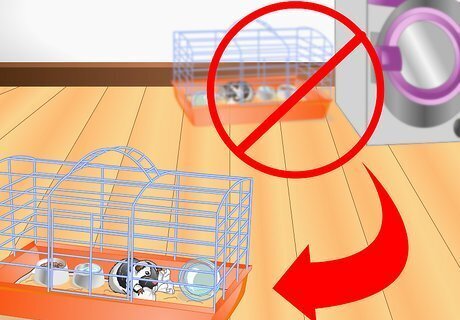
Control the environment. Remember that guinea pigs need a constant temperature, and your pet's cage should not be exposed to direct sources of heat or cold. It's best to keep the room temperature from dropping below 70 degrees Fahrenheit (21.1 degrees Celsius) or getting above 90 degrees Fahrenheit (32.2 degrees Celsius).

















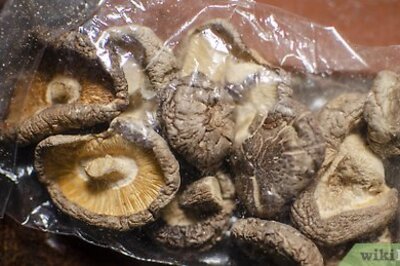


Comments
0 comment